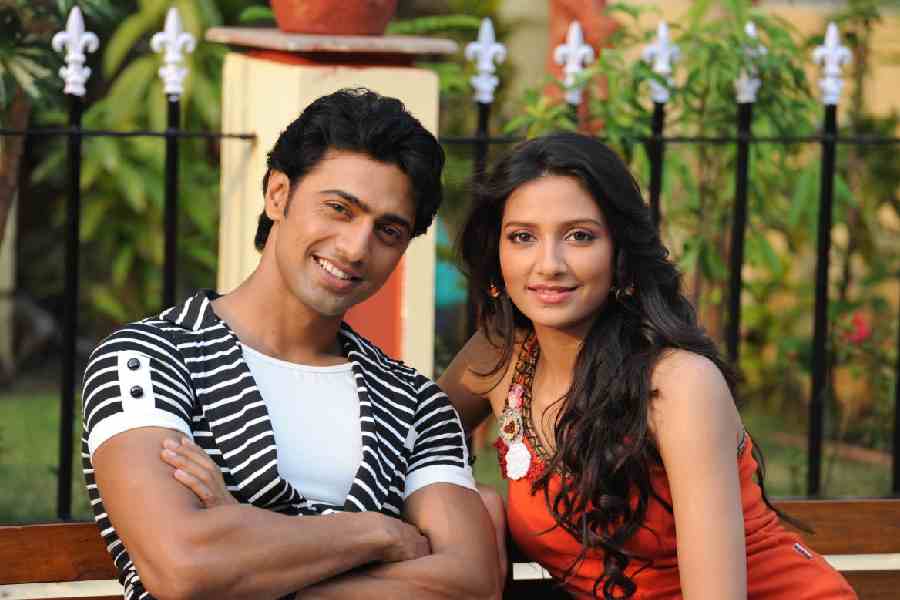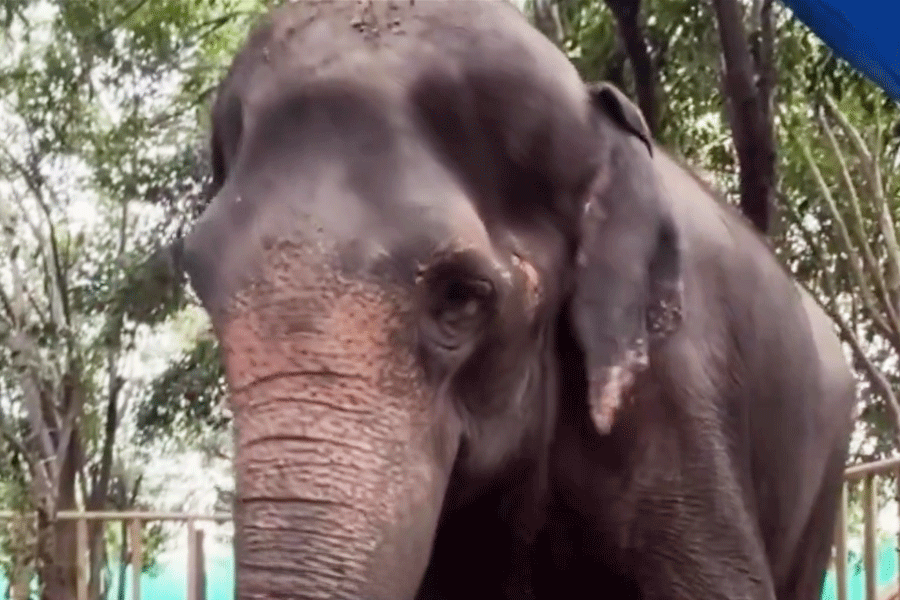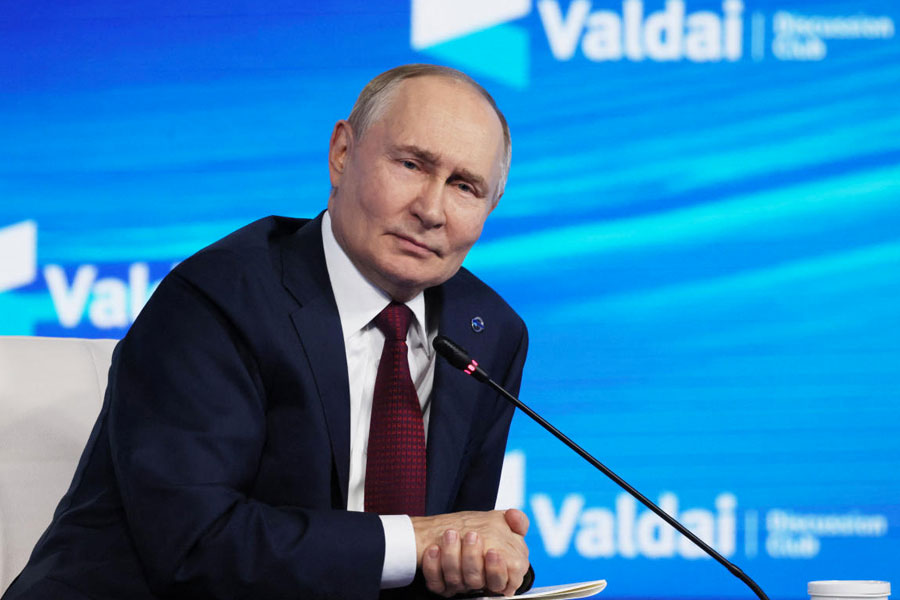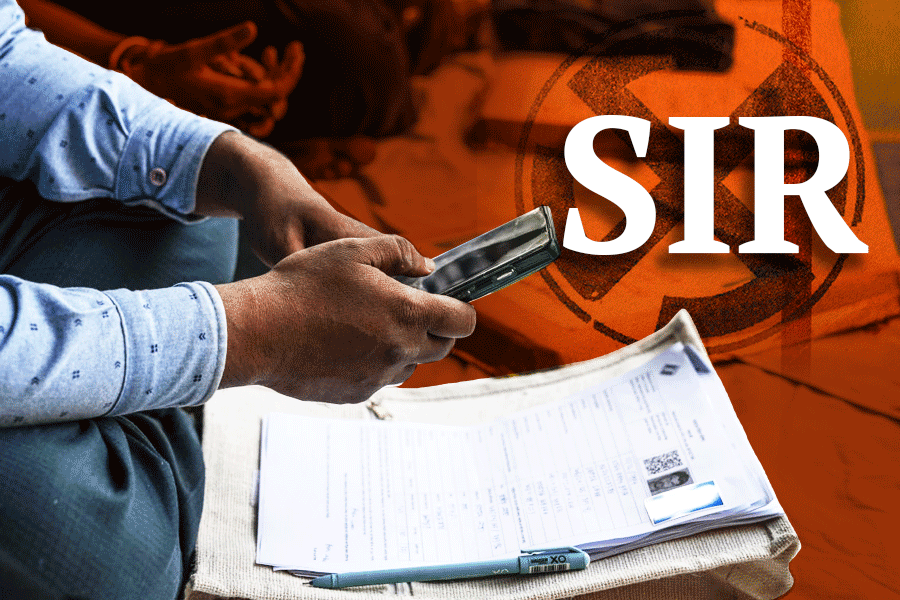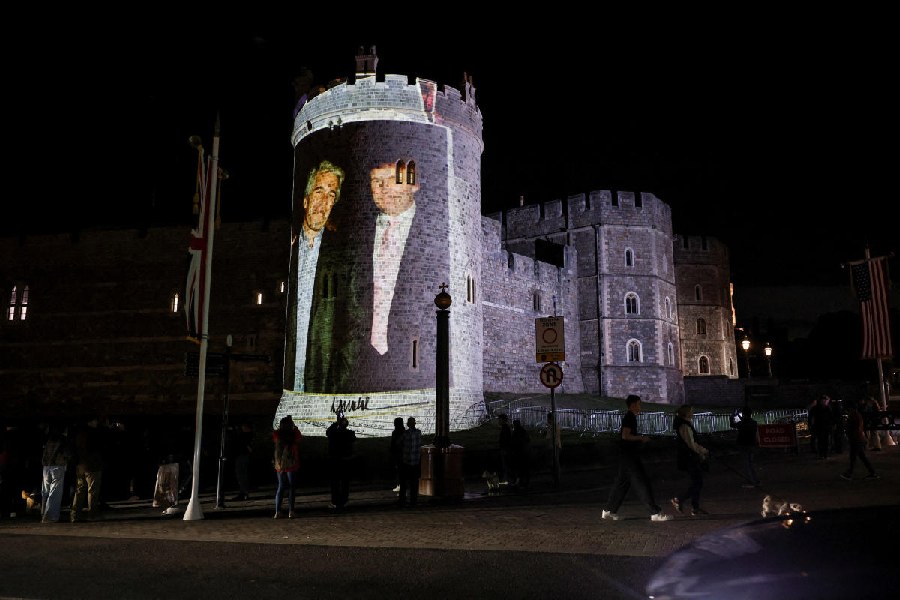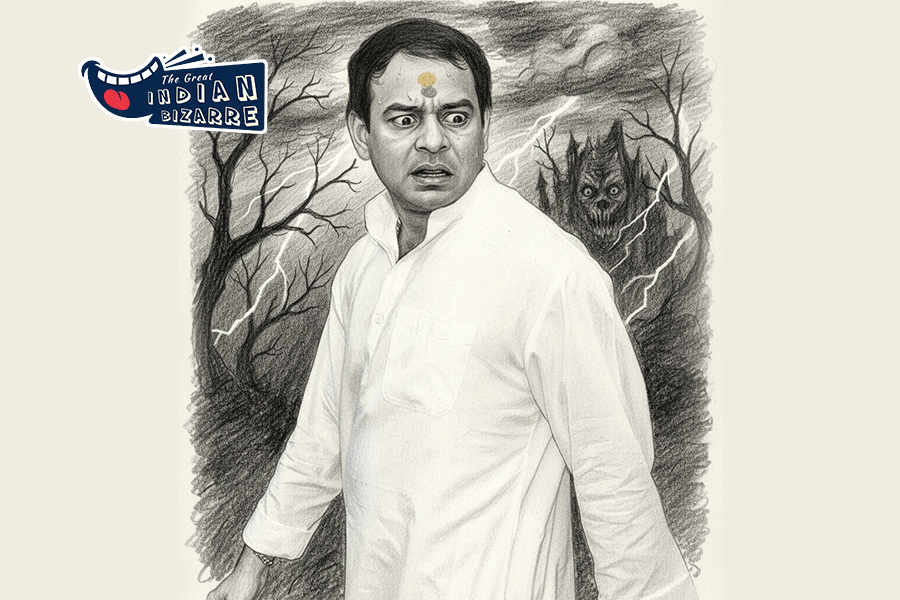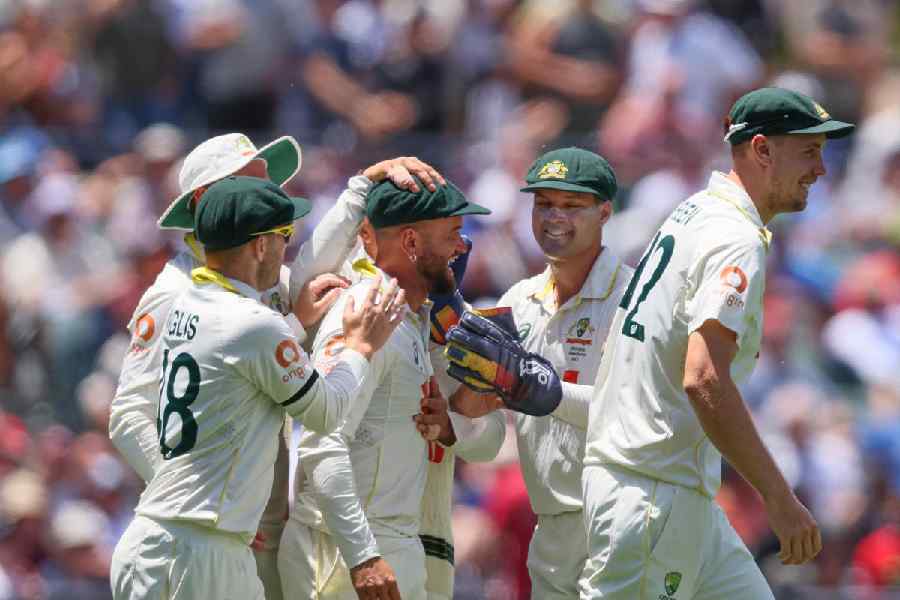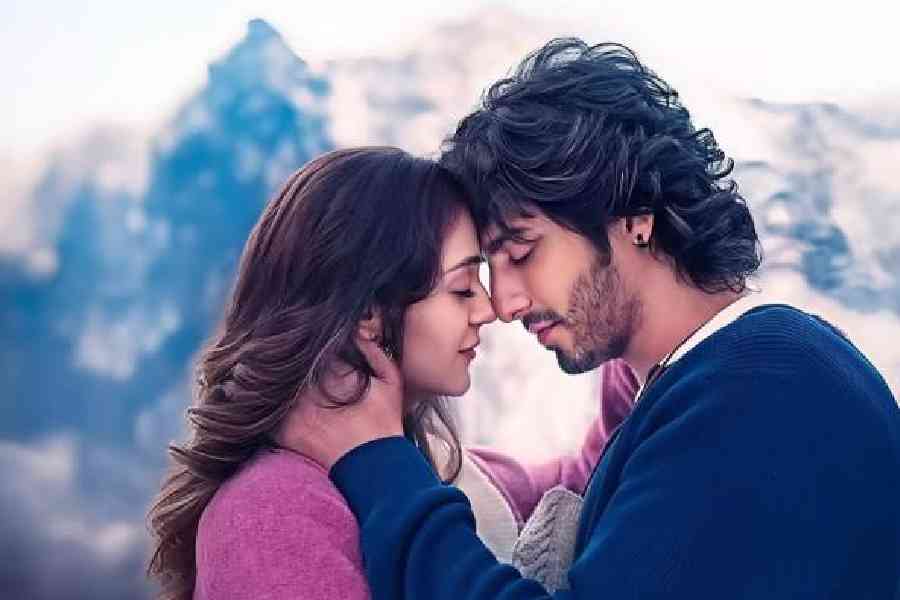When the lights dimmed at the Dhumketu trailer launch, for a moment, the packed auditorium felt suspended in time. Then they walked in — Dev in a sharp black suit, Subhashree Ganguly in a thigh-slit black dress that caught the light with every step — and the room shifted. Cameras clicked like a hailstorm. The roar of applause had that peculiar warmth reserved for old friends you haven’t seen in years. On stage, they smiled at each other in a way that said: Yes, it’s been a while. Nine years, to be precise.
“Amar shathe friendship korbe?” Subhashree teased, tilting her head with that same playful glint. “Kyano?” Dev shot back, the old spark intact. “Emni,” she replied, and just like that, a line from Challenge became the heartbeat of Dhumketu’s grand trailer launch. The auditorium roared. On stage, the duo pulled the crowd into a frenzy of whistles, cheers, and frantic phone recordings.
This was more than an event; it was the re-ignition of a screen pairing that had once been the heartbeat of Bengali mainstream cinema. But why does it still work? Why, in an industry where on-screen pairs rise and fade with the seasons, does “Dev–Subhashree” still evoke the promise of glamour, romance, and something bigger than life? To understand, you have to rewind — past the headlines, past the years apart — to where the story began.
A Golden Era Written in Song
Their story began in 2009 with Challenge, a film whose swaggering energy matched the confidence of its leads. Dev, by then a rising action hero with a knack for filling the frame, met his match in Subhashree, a newcomer whose glamour didn’t overshadow her expressive vulnerability. The pairing clicked instantly, and over the next few years, they became one of the most bankable duos in the industry with films like Paran Jai Jaliya Re, Khokababu, Romeo, and Khoka 420.
These films often leaned on familiar romantic tropes, but were reinterpreted for Bengali audiences. In Paran Jai Jaliya Re, Subhashree played an NRI woman who falls for a local guy, played by Dev. In Romeo, they were lovers facing parental opposition.
The films were built on certain guarantees — chart-topping songs, explosive action sequences, and at least one slow-motion walk to signal a love story’s turning point. Songs like Mala re, Paran jai jaliya re, Challenge and Ghum ghum ei chokhe continue to dominate parties and weddings.
The Magic of Contrast
Dev’s brand of heroism — kinetic, confident, almost larger than life — found its perfect counterpoint in Subhashree’s poise. She never receded into the background; she anchored him.
In songs like Soniye tu janiye tu and Bondhura elomelo, this meant striking visual harmony: his bold, sweeping movements set against her precise, fluid grace. He played the larger-than-life hero, wooing the heroine with grand gestures, while she, graceful and shy yet self-assured, met his energy with quiet strength. In romantic sequences, the push-and-pull between his playfulness and her subtlety created a believable rhythm. From the cheeky “I love Anna… anarosh” to the aching strains of Chokher jole, from his signature open-armed stance to her slipping in from behind for that hug — their best moments were like fire meeting still water, each amplifying the other’s presence until it became unforgettable.
Layer onto that the cinematic backdrops — sweeping London streets, Bollywood-style romance, the timeless arches of Prinsep Ghat, the expanse of Howrah Bridge. For audiences, there was a sense of both grandeur and familiarity. It was a blend of fantasy and reality that gave their pairing its enduring charm.
Growth — Apart and Together
By 2013, the Dev–Subhashree collaborations slowed, then stopped. Careers diverged. Dev took on projects that transformed his screen presence and stretched him beyond the commercial template — Chander Pahar, Bunohaans, Chaamp, Zulfiqar, Tonic, Golondaaj, Projapoti, and Bagha Jatin. Subhashree shifted towards performance-heavy roles, carving out a new identity in Parineeta, Boudi Canteen, Indubala Bhaater Hotel and Grihapravesh.
When actors evolve separately, reunions risk feeling mismatched. But here’s the thing — their growth has only deepened their chemistry. Dev is now more restrained, more deliberate in his performances; Subhashree’s emotional range has expanded without losing her screen charisma. The maturity in both gives Dhumketu the potential to be not just a nostalgic reunion but a reinvention.
Nostalgia, Carefully Bottled
For most fans, their earlier films aren’t just entertainment — they’re time capsules. For instance, 16 years later, Dhaker taale remains a cult favourite when it comes to Durga Puja and the soundtrack of Khokababu at youth festivals is a given. The duo was not only able to penetrate into the masses but also capture a permanent space with their dialogues, songs and familiarity. The glossy posters in cinema lobbies, with Dev and Subhashree framed against a sunset or mid-dance pose. Single screens packed with die-hard fans. These weren’t just films; they were the visual shorthand for a certain chapter in Bengali mainstream cinema.
That’s why the Dhumketu announcement landed with such impact. It tapped into the same emotional circuits as a favourite childhood snack or an old friendship rekindled — familiar, comforting, and tinged with memory. The marketing has leaned into this wisely, letting the audience project their own memories onto the reunion while hinting at something new. Another factor that is sure to pull audiences to the theatre is that Dhumketu was shot 10 years ago, so viewers see the actors from almost a decade ago but witness them in real time during monumental promotions. The idea is less about promoting a film and more about rekindling a shared cultural moment.
The Professional Friendship Factor
One reason their on-screen ease feels so authentic is that they’ve maintained a cordial, respectful professional rapport even through the years apart. Industry insiders talk of them as co-stars who understand each other’s rhythms, who can slip into a scene together without lengthy warm-ups. At the Dhumketu trailer launch, that was evident in the small moments: a shared laugh at Rohaan Bhattacharjee’s hosting quip, the easy back-and-forth during media questions. The spirit was intact.
That mutual comfort isn’t just pleasant to witness — it’s the bedrock of their believability as a pair. And when two actors deliver back-to-back hits, it’s inevitable that dating rumours will swirl. But beyond gossip, romantic chemistry on screen has always been about trust — the quiet assurance that the other will catch you when you take the emotional leap.
Why Some Pairings Are Timeless
Bengali cinema has a tradition of screen duos who endure beyond the sum of their films — Uttam Kumar and Suchitra Sen in the golden era, Prosenjit Chatterjee and Rituparna Sengupta. Jeet and Koel Mallick. Dev and Subhashree’s names now live comfortably in that lineage.
Part of this is audience psychology. Viewers invest in pairs the way they invest in long-running friendships: the shared history makes each new chapter feel richer. Another part is rarity — in an industry where stars often flit between co-actors, a consistent pairing becomes its own brand. Even with a nine-year gap, “Dev–Subhashree” still reads as a promise: glamour, romance, and the feeling of watching something bigger than life.
And that may be the final key to why their chemistry works. It’s not just about two actors standing side by side. It’s about what they represent together — a shared history, a balance of energies, and the ability to make audiences believe, even in an age of streaming distraction, that some things are worth showing up for at the cinema.
Maybe it’s nostalgia. Maybe it’s the sheer star power. Or maybe it’s that rare alchemy that can’t be manufactured — the Dev-Subhashree phenomenon, alive and well after nine years. Whatever it is, it still makes tickets vanish in minutes, turns film launches into fan carnivals, and proves that some on-screen pairings never lose their magic — they just wait for the right moment to set the stage on fire again.

